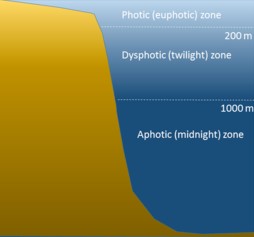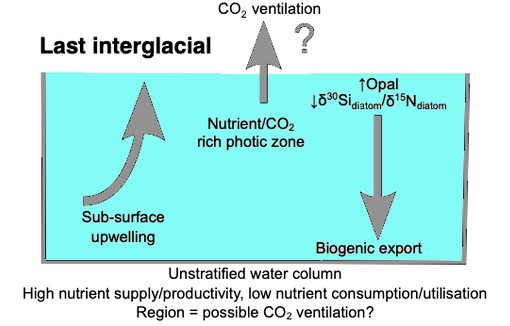The ocean is a vast and mysterious place, home to a variety of wildlife. One of the ways to divide up this vast space is into photic and aphotic zones. Although these two terms may seem interchangeable, they each have important distinctions that set them apart.
Although these two terms may seem interchangeable, they each have important distinctions that set them apart. In this blog, we’ll explore the differences between the photic and aphotic zones, and why they are fundamental to understanding life in the ocean.
Explanation of photic zone

The ocean is an incredible ecosystem that is filled with life. It’s divided into two distinct zones – the photic zone and the aphotic zone.
The photic zone, also known as the sunlight zone, is the uppermost layer of the ocean, where sunlight can reach and penetrate the water. It’s the most abundant part of the ocean in terms of life, as the sunlight provides energy for photosynthesis. On the other hand, the aphotic zone, also known as the midnight zone, is the deepest part of the ocean where no sunlight can reach.
This zone is filled with creatures that have adapted to living without sunlight, such as deep-sea fish and bioluminescent creatures. The difference between the photic and aphotic zone is quite stark, as the photic zone is filled with life and the aphotic zone is dark and mysterious.
Explanation of aphotic zone

The ocean is divided into two distinct zones: the photic zone and the aphotic zone. The photic zone is the area closest to the surface of the ocean and is the only area that receives direct sunlight, making it the most productive and diverse region in the ocean. The aphotic zone, on the other hand, is the area beyond the photic zone and is completely deprived of sunlight.
It is the deepest and darkest area of the ocean, ranging from 200 meters to depths of 11,000 meters and beyond. The lack of sunlight in the aphotic zone means that it is a nutrient-poor environment, devoid of the lush plant and animal life found in the photic zone.
As a result, the aphotic zone is home to some of the most unique and bizarre creatures adapted to life in the dark depths of the ocean.
Biological implications of the photic and aphotic zone

The photic and aphotic zones are two distinct areas in the ocean that have distinct biological implications. The photic zone, also known as the “sunlight zone,” is the area of the ocean that is closest to the surface and is illuminated by sunlight. This zone is home to a wide variety of marine life, including coral reefs, fish, sharks, and other animals that need light to survive.
This zone is home to a wide variety of marine life, including coral reefs, fish, sharks, and other animals that need light to survive. In contrast, the aphotic zone, also known as the “twilight zone,” lies beneath the photic zone and is not illuminated by sunlight. This area is home to organisms that are adapted to living in the absence of light, such as deep-sea fish, crustaceans, and cephalopods.
While the photic and aphotic zones are both important habitats for marine life, the differences between them are significant and have implications for the biological diversity of the ocean.
Threats to the photic and aphotic zone
The photic and aphotic zones are two distinct regions found in bodies of water. The photic zone is the area of the water where light penetrates and photosynthesis can occur, while the aphotic zone is the area of the water that is not penetrated by light, also known as the “midnight zone”.
The photic zone is a more hospitable environment for marine life, but the aphotic zone can still be an important habitat for organisms that have adapted to lack of light. Unfortunately, both of these zones are under threat from various sources, including overfishing, pollution, and climate change. Overfishing can deplete the fish populations that inhabit photic and aphotic zones, while pollution can lead to algal blooms, which can block out sunlight and disrupt the delicate balance of the aquatic ecosystem.
Climate change can also lead to rising water temperatures, which can have a devastating effect on marine life in both zones. It is therefore essential that we take steps to protect these two distinct regions in order to maintain the health of our oceans.
Solutions to preserve the photic and aphotic zone
The ocean is home to a wide variety of marine life, and is divided into two distinct zones: the photic and aphotic zones. The photic zone, also known as the sunlight or epipelagic zone, is the area of the ocean where light penetrates the surface and supports photosynthesis. By contrast, the aphotic zone, or the deep sea, is the area of the ocean where light does not penetrate and photosynthesis cannot occur.
To preserve these two unique and vital zones, it is important to reduce human activities such as overfishing, pollution, and climate change that can negatively impact marine life. Additionally, creating marine protected areas and reducing plastic waste can help to ensure the health of the photic and aphotic zones and the creatures that inhabit them.
Bottom Line
In conclusion, the photic zone and the aphotic zone are two distinct and unique regions of the ocean. The photic zone is the region of the ocean where sunlight is able to reach, allowing for the growth of photosynthetic organisms.
The aphotic zone is the area of the ocean where sunlight does not reach, and is home to a wide variety of organisms that have adapted to living in the dark. Both the photic and aphotic zones are essential to ocean life, and both have unique characteristics that make them fascinating environments to explore.

